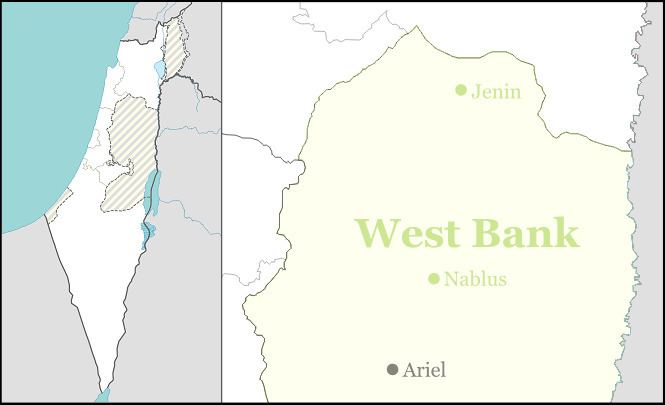Founded 1977 | Council Shomrom Affiliation Amana Population (2015) 879 | |
 | ||
Weather 13°C, Wind SE at 3 km/h, 71% Humidity | ||
Shavei Shomron (Hebrew: שָׁבֵי שׁוֹמְרוֹן, lit. Returnees of Samaria) is a communal Israeli settlement in the northern West Bank. Located to the west of Nablus (Shechem) on the road to Tulkarm, it falls under the jurisdiction of Shomron Regional Council. In 2015 it had a population of 879, mostly religious Zionist and Modern Orthodox Jews. Its municipal jurisdiction is 664 dunams, of which 272 dunams are built up.
Contents
Map of Shavei Shomron
The international community considers Israeli settlements in the West Bank illegal under international law, but the Israeli government disputes this.
History
In late 1976, supporters of the Gush Emunim (Bloc of the Faithful) staged a takeover of the abandoned Sebastia railroad station, located outside an Arab village of the same name. The location is in proximity to the ruins of Samaria, the capital city of the northern Kingdom of Israel, built by King Omri. Using this as justification to secure the Israeli claim to the region, the demonstrators demanded that settlement be initiated in this region. With the support of newly elected Prime Minister Menachem Begin, a residential community was built the following year alongside a military base at a strategically valuable crossroads by residents of nearby Netanya, and with the assistance of the Amana settlement organisation.
Intifada and disengagement
Like all Israeli settlers, the residents of Shavei Shomron traveled through and conducted business in Nablus and neighboring Arab villages. However, as tensions increased following the First Intifada, Israeli travel to Nablus was restricted, and new roads were built to bypass certain villages. Twenty-four hundred dunums were confiscated from Palestinian villages to build a bypass road from Shavei Shomron to the Mt. Ibal military installation. In 2002, the Israeli Supreme Court approved the construction of part of the West Bank barrier around the community. Many local residents opposed its construction, fearing that it may become a future border between Israel and a Palestinian state. Others were concerned that an incident like the one earlier in the year, when a terrorist infiltrated the community and targeted the kindergarten with grenades and firearms before being shot by a local resident, could be repeated without such measures.
In August 2005, the community hosted mass demonstrations in opposition to the Israeli disengagement from Gaza, which included the forced evacuation of four settlements to the north of Shavei Shomron, and brought a potential frontier to the settlement's backyard. Following their evacuation and demolition, the community hosted some of the former residents of Homesh and Sa-Nur.
As of 2008, residents of Shavei Shomron were being trained by Mishmeret Yesha in counterterrorism tactics and the use of guns.
Demographics
The community boasts a swimming pool, ulpan (Hebrew classes) for newcomers, and picturesque views of the Samarian hills, which serve to attract a population including many olim (Jewish immigrants) from English-speaking countries as well as Russian Jews from the former USSR, Yemenite Jews, Bnei Menashe, and some Incan Jewish families from Trujillo, Peru that converted to Orthodox Judaism.
